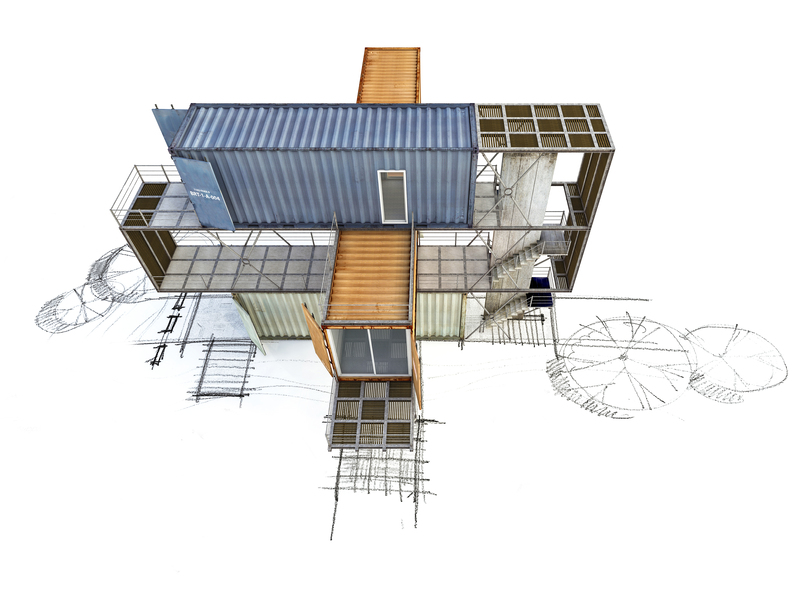Clutter-Free Living: Continued Strategies for a Tidy Home
Clutter-free living is more than just an aspiration - it's an ongoing commitment to maintaining harmony, order, and peace within your home. As we become increasingly aware of the psychological and physical benefits of tidy environments, adopting effective decluttering strategies becomes a necessity rather than a choice. If you are seeking fresh, sustainable approaches to enjoy a consistently organized home, this comprehensive guide is tailor-made for you.

Why Clutter-Free Living Matters
A clutter-free home is not only aesthetically pleasing; it also nourishes your mind and body. Research has shown that ordering your physical space can:
- Reduce stress and anxiety by removing visual chaos
- Boost productivity and creativity
- Enhance mental clarity and focus
- Encourage better lifestyle habits, such as meal prep or fitness
- Make cleaning and maintenance easier and faster
By choosing continued strategies for a tidy home, you are prioritizing not just cleanliness but also your overall well-being.
Assess Your Clutter Hotspots
Before initiating any decluttering process, it's important to identify areas where clutter gathers. Typical sectors include:
- Entryways, where mail, shoes, and bags accumulate
- Kitchen counters and dining tables
- Bathrooms with overflowing cabinets
- Closets packed with unused clothes and accessories
- Home offices and junk drawers
Once you've pinpointed these trouble areas, you can create a personalized plan to address each space systematically.
Continued Decluttering Strategies for a Tidy Home
1. The 10-Minute Rule
One of the simplest yet most effective ways to maintain clutter-free living is by allocating just ten minutes a day to tidying up. No matter how busy your schedule is, a brief daily investment can make a significant difference. Set a timer and focus on one room or surface at a time.
- Clear countertops
- Put back misplaced items
- Quickly sort mail or paperwork
This practice instills the *habit* of consistent maintenance rather than occasional overhauls.
2. Adopt a "One In, One Out" Policy
To avoid future build-up, for every new item you bring into your home, remove an old or unused one. This rule is particularly effective for clothing, kitchen gadgets, and children's toys.
- Donate, sell, or recycle items that no longer serve you
- Teach family members to adopt the same principle
3. Categorize and Conquer
Instead of tackling your entire house at once, focus on categories of items:
- Books
- Clothing
- Paperwork
- Kitchenware
- Sentimental objects
Complete one category before moving to the next, ensuring a thorough and organized approach.
4. Invest in Smart Storage Solutions
Effective storage is the backbone of a tidy home. Choose multi-functional storage solutions tailored to your space and needs:
- Under-bed storage bins
- Modular shelving units
- Baskets and labeled containers
- Hang hooks or racks behind doors
Labels help keep everyone in your household accountable for maintaining organization.
5. Seasonal Decluttering Sessions
Set aside time at the start of each season for a deeper decluttering session. Rotate wardrobes, evaluate gadgets, and reassess what your living space truly needs. These sessions ensure you are continuously maintaining a clutter-free environment, not allowing possessions to accumulate unnoticed.
Unique Tips for Clutter-Free Living
Declutter Digitally
Clutter isn't only physical. Digital clutter--in the form of overflowing inboxes, disorganized files, and unwanted photos--can be just as overwhelming.
- Unsubscribe from useless emails
- Delete duplicate files and photos
- Organize your desktop with clear folders
Regularly cleaning up your digital world contributes to a more focused, clutter-free life.
Re-think Your Shopping Habits
Impulse buying is often the root cause of clutter. Practice mindful shopping by:
- Making lists and sticking to them
- Waiting 24 hours before making non-essential purchases
- Asking yourself if each new possession adds real value
Teach Everyone Involved
Clutter-free living is a team effort. Involve children and other household members:
- Assign age-appropriate decluttering tasks
- Establish routine "clean sweep" times
- Celebrate milestones together
Create a Clutter-Free Entryway
The entryway sets the tone for your home. Keep it clutter-free by:
- Using shoe racks or trays
- Having a designated hook for each person's coat and bag
- Placing a mail sorter for incoming post
This ensures first impressions are always welcoming and organized.
Room-by-Room Decluttering Strategies
The Living Room
- Store remotes, magazines, and small items in a decorative basket or drawer
- Limit throw pillows and blankets to essentials
- Commit to a quick tidy each night before bed
The Kitchen
- Keep counters clear, with only daily essentials (coffee maker, toaster)
- Group pantry goods in clear, labeled containers
- Sort and declutter the fridge weekly
The Bedroom
- Utilize under-bed storage for out-of-season clothing
- Have a minimalist nightstand with only necessary items
- Make your bed every morning for an instant sense of order
The Bathroom
- Keep only daily products on counters
- Limit towels and linens to what you actually use
- Use wall-mounted racks to maximize space
Home Office
- Go paperless wherever possible
- Use drawer organizers for supplies
- Remove non-work-related items from your desk
Overcoming Common Clutter Challenges
Sentimental Attachment
Letting go of items imbued with memories can be difficult. Try:
- Photographing items before parting with them
- Keeping only a select few truly meaningful mementos
- Displaying treasures in a dedicated space instead of hiding them away
Lack of Time
- Break decluttering into small, manageable tasks
- Set aside just 5-10 minutes a day, as mentioned earlier
- Use commercial breaks or waiting times for mini clean-ups
Family Resistance
- Discuss the benefits of a tidy home for everyone
- Offer choices and respect differences in organizing styles
- Make decluttering a regular family activity
Design Your Home for Lasting Tidiness
The key to clutter-free living is to design your environment in a way that naturally discourages mess. Make tidiness easy with these principles:
- Choose furniture that offers hidden storage
- Opt for open shelving to keep only what you love and use
- Reduce flat surfaces that invite dumping
- Keep floor space open for easier cleaning and a more tranquil look
Designating every item a "home" helps prevent items from ending up as clutter. If something doesn't have a specific spot, its purpose in your living space should be reconsidered.
Maintaining the Momentum
Transitioning to a consistently organized home isn't an overnight process, but small wins add up. To maintain your momentum:
- Celebrate successes, no matter how small
- Regularly revisit and reassess trouble areas
- Stay inspired with blogs, podcasts, or social media focused on organized living
- Reward yourself and your family after larger decluttering projects

Benefits Beyond a Tidy Home
When you practice continued strategies for a tidy home, you're investing in much more than neat shelves. You're cultivating a sanctuary that supports your goals, your health, and your happiness. Clutter-free living frees up valuable time, mental energy, and resources, making it easier to focus on what truly matters.
Conclusion: Your Clutter-Free Journey
Embracing clutter-free living requires commitment and creativity, but the payoff is transformative. With practical strategies and a willingness to adapt, you can enjoy an organized, inviting, and clutter-free home for the long term. Remember, tidiness isn't about perfection--it's about creating a space that empowers you to live your best life, every day.
Ready to take the next step? Start with just one strategy, and watch your home--and your life--become more peaceful, focused, and joyfully uncluttered.